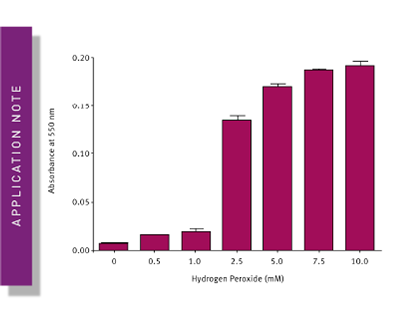
Biocolor's APOPercentage Apoptosis Assay on BMG LABTECH's microplate reader
See here, how the APOPercentage assay on BMG LABTECH microplate readers provides a fast, accurate and consistent method for quantifying apoptosis colorimetrically.


Biology covers the science of molecules all the way up to ecosystems. Discover how BMG LABTECH plate readers can advance biological research and learn about some of the many possibilities for applications.
The study of living things encompasses innumerable scientific subdisciplines. Biological research may comprise everything from molecules to ecosystems. It is remarkable that the microplate reader, a specialised analysis instrument, can be used in virtually every sub-discipline.
No matter if you aim to study a differentiation-related decrease of stem cell proliferation, want to study antioxidant capacity of edible plants, are looking for requirements of infectious bacteria or the immune response of whole organisms, microplate readers support all your needs. They are widely used in biological evaluation. A large proportion of the application revolves around everyday measurements like protein quantifications, enzymatic measurements, reporter assays or cell viability evaluations. However, in advanced applications, microplate readers can also be used to determine single nucleotide polymorphisms or ligand receptor interaction studies.
Search our resources section for information about specific applications, literature citations, videos, blog articles and many other publications. Many of the resources provided are associated with current and previous instrument models and versions.
See here, how the APOPercentage assay on BMG LABTECH microplate readers provides a fast, accurate and consistent method for quantifying apoptosis colorimetrically.
Comparison of Campylobacter jejuni growth studies performed using the traditional method of tubes shaking in a VAIN and a plate reader equipped with the Atmospheric Control Unit.
The UV fluorescence polarization-based measurement of membrane fluidity allows for the monitoring of large scale alterations in membrane fluidity and changes in lipid dynamics.
Cell migration on different ECM components was measured in real-time for up to 48 hours using the Oris Cell Migration Assay and cells with different proteins knocked down.
Quorum sensing is a phenomenon allowing bacteria to adapt to environmental changes. Effects on quorum sensing were investigated by measuring bioluminescence and bacterial growth.
To identify and assess potential modulators of the Gα/GoLoco interaction in GPCR signaling, putative inhibitors were screened using a CFP-YFP FRET assay.
Gene reporter assays are sensitive and specific tools to study the regulation of gene expression. Learn about the different options available, their uses, and the benefits of running these types of assays on microplate readers.
ELISAs are a popular tool to detect or measure biological molecules in the life sciences. Find out how microplate readers can be used to advance research using immunoassays.
Life in the depths of the ocean operates under extreme conditions. Find out how proteins from deep-sea luminescent organisms are useful for measurements on microplate readers.
This article highlights the characterisation of hemoglobin and how microplate readers can help to monitor its state or condition based on variations in its absorbance spectrum.
Powerful and most sensitive HTS plate reader
Most flexible Plate Reader for Assay Development
Flexible microplate reader with simplified workflows
Upgradeable single and multi-mode microplate reader series
Absorbance plate reader with cuvette port